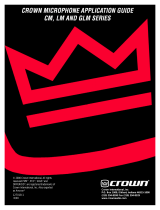
Application and use
The 2028 Vocal Microphone is a professional stage mic with extraor-
dinary natural sound, high separation from nearby sound sources and
very high SPL handling.
The mic features exceptionally controlled directional quality. This, com-
bined with superb definition and true dynamics, makes the 2028 the
perfect match for all types of live performances.
Grid and windscreen
The 2028 has a very eective 3-step pop protection grid incorporated,
which removes unwanted pop noise. When used outdoors or with
artists that create pronounced wind or pop sounds, it may be neces-
sary to add an additional external windscreen.
Phantom power (For wired version)
The 2028 is designed to apply its full specifications at the standard +48
volt phantom power (± 4 V) but will work at lower supply voltages with
reduced specifications.
Cleaning
Keep the microphone dry – away from water and cleaning fluids. Do not
use sprays or fluids containing chemicals that could remove static electricity
on or near the microphone. This could cause permanent damage.
To clean the grid properly, without risk of causing damage to the capsule,
you have to unscrew it from the microphone body. Be aware that the
mic capsule itself should not be cleaned in any way, as it will influence the
performance.
The grid consists of two parts: the outer black metal mesh and an inner
foam windscreen. Both parts may be cleaned separately.









